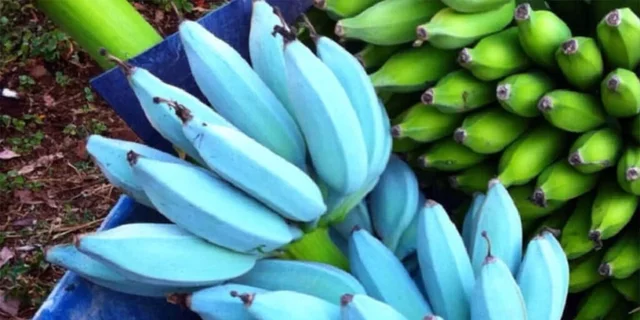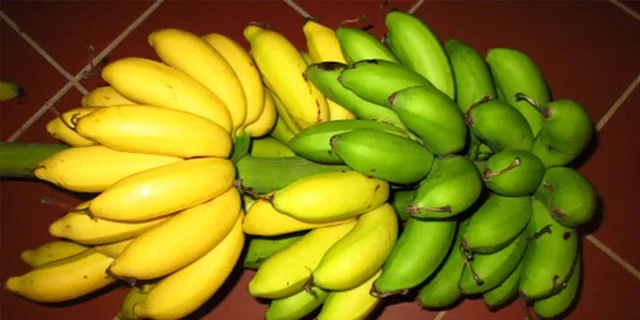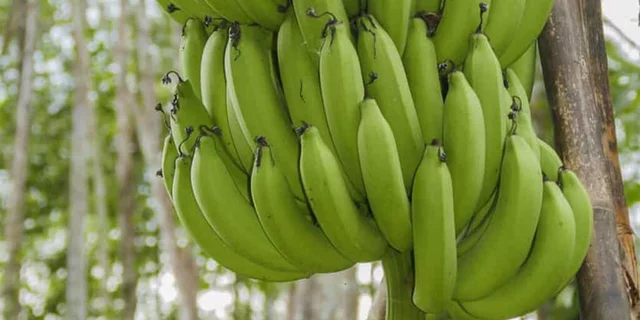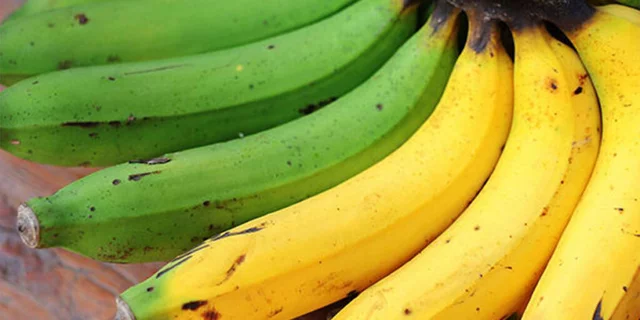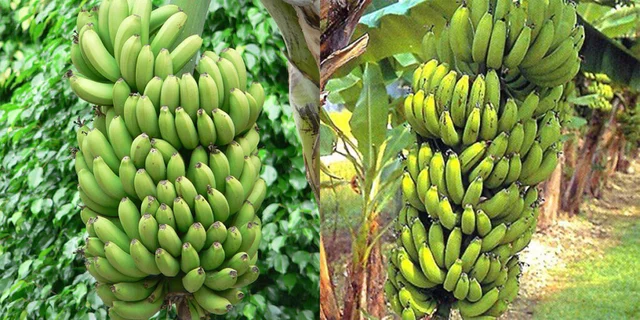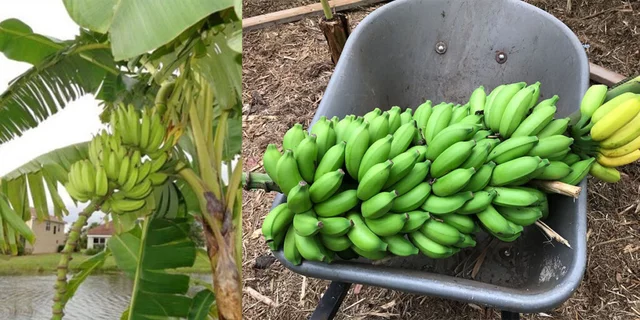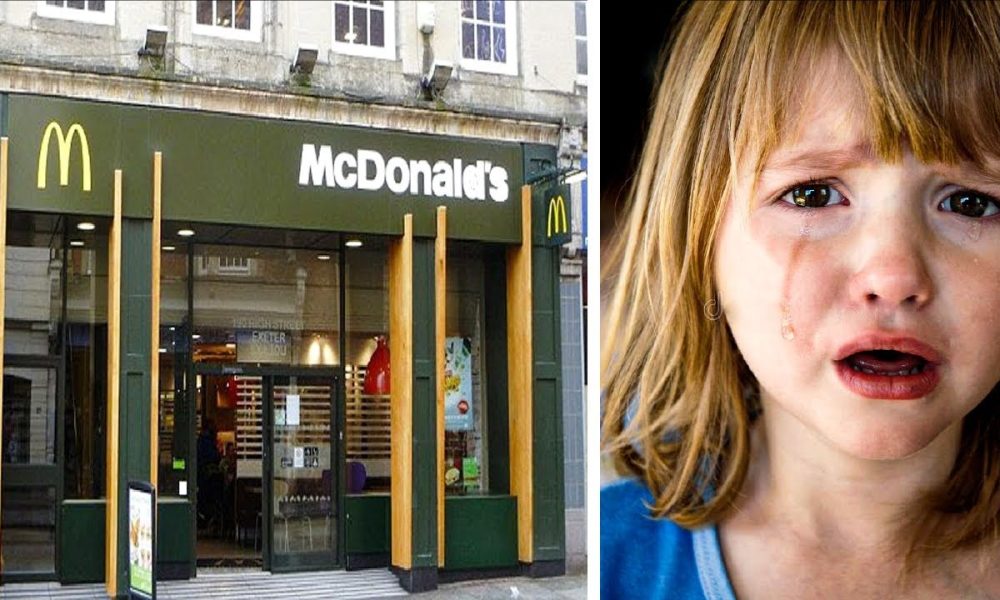Bananas appear in a curved and elongated shape with differing colours. Most people like these fruits because of their sweet flavor and taste. How many varieties do you know? Let us find out the commonest types of bananas.
Bananas belong to the fruit and vegetable family, which are vital to our bodies. Various banana varieties have different flavors, sizes, shapes, and colours. Besides, regular consumption of these fruits is useful to the body in several ways…Click Here To Continue Reading>> …Click Here To Continue Reading>>
There are two major categories of bananas: Dessert and Cooking (Plantain)
These bananas are usually eaten raw because of their different sweet flavors. They also differ in size, shape, and color. Dessert bananas are rich in minerals such as potassium and magnesium that are vital to the body. The varieties of dessert bananas in the world today include;
Also called baby bananas, ladyfinger bananas have a chubby and short look. Averagely, they are 3 to 5 inches long with cigar-shaped fruits. When ripe, these bananas turn from green to bright yellow with a creamy flesh that gives them a unique and sweet taste.
If you have been looking for the types of bananas that are resistant to pests and tolerant to cold, then the gold finger is one of them.
These bananas
are native to Honduras and popular in the western markets. Surprisingly, the bananas came into existence after the cross-hybridization of other varieties, especially the ladyfinger and Cavendish. The fruits taste sweet when ripe, but you can cook them as well.
This variety is popular in both the eastern and western markets as well as other parts of the world. They are of different sizes; giant and dwarf. When mature, the bananas turn from green to bright yellow and even to deep yellow with a few brown spots. Moreover, you can add Cavendish bananas to your pancakes, smoothies, or bread.
These bananas are reddish-purple with a creamy white flesh of orange and pink tinge. Besides, their raspberry flavor makes them sweeter than other banana varieties. Some take them ripe while others use them to make juice. The red bananas are planted in different places such as East Africa, Asia, and South America but are more cultivated in Central America.
These bananas are also known as blue java and have ice cream like flavor. They grow longer up to an average length of 7 inches. The fruits have silver-blue skin with a creamy white and sweet flesh. When ripe, they have pale yellow skin. Some eat them raw, while others add them to smoothies.
This variety is among the types of bananas that are rare to find. As their name suggests, these fruits conjoin ‘hands’ as if praying and merging as they grow. The bananas have vanilla-like flavor and less sweet than other varieties.
These bananas are also termed as Manzano and are very popular in many parts of the world. Apple bananas have thick and firm peels with creamy flesh. When young, the fruits have a mild apple and strawberry flavor. As they ripen, their skin changes to bright yellow then become dark with a strong scent of apple and strawberry.
These bananas are also called big mike. Around the 1950s, the variety was in plenty, but unfortunately, the fungus disease wiped them, the main reason for their rarity. Among other types of bananas, big mike has creamy flesh with a sweet, strong smell. Some individuals use it to make banana pies.
These bananas are commonly cultivated in India, a place called Mysore. Besides, the fruits grow well in Mysore and Nanjangud places in India because of the alluvial clay soils. Mysore bananas have thin skin with a tart flavor. READ FULL STORY HERE>>>CLICK HERE TO CONTINUE READING>>>
Also called plantains, these types of bananas are popular in most places, including Africa, Asia, South and Central America, and the Caribbean. Cooking bananas are rich in starch, beta-carotene, potassium, vitamin C and B6, and are mainly served as vegetables. These bananas taste delicious when cooked, fried, or roasted even thou some people eat them when ripen. Types of cooking bananas include;
These bananas are large and straight in shape with a lot of starch. The bananas are resistant to Panama disease, unlike other varieties. Most people, especially from East Africa, Thailand, Burma, and South India, cook them. You can as well take them raw.
These are among the types of bananas with seeds inside. The fruits are copper-toned in colour, with orange, yellow flesh containing a high content of starch. Some say that Fehi bananas taste delicious when cooked, unlike raw ones.
The bananas are also called burro, hog, or the Orinoco. They have an angular shape, thick and hardy skin with salmon tinted flesh. As they mature, their texture becomes smoother and their peels fibrous. Sometimes their trees bear huge heads hence good to support and prevent them from falling. These bananas taste sweet when cooked.
This type of bananas is popular in the United States more so in Florida. Most people like cooking macho bananas because they
taste delicious
. You can as well roast them in a grill or saute them in your butter.
These plantains are among the types of bananas that are very popular in Africa. They grow long up to 2 feet, and usually bear large fruits. The bananas taste sweet when cooked.
The plantains, also called Dwarf Jamaican, are small. As they mature, their flesh becomes creamy pink, having a raspberry flavor. When ripe, these bananas change to sunset yellow. Some use it as a salad in their meals while others eat ripe ones.
This variety is popular in many places in the world. Their peels are somehow yellow with some black dots. The bananas have pure white flesh and taste sweet when cooked. Some also prefer eating them ripe.
This variety is a staple food in Philippine cuisine. Saba trees have dark bluish-green leaves with robust pseudo stems. Besides, the bananas are large with an angular shape and thick skin. Most people prefer cooking them.
They are commonly called Musa Belle and are among the common types of bananas in Indonesia. Musa Belle bananas have a firm texture with thick skin and a sweet flavor. Indonesian people use these bananas to make Pisang Goreng, which is common street food. Some also use Pisang Raja to make banana pancakes.
Bananas are not only sweet but also very important to our bodies. Some types of bananas are easy to find, while others are rare. If you fail to get some varieties in your local market and supermarket, then try to find them in online markets. Which type have you not tasted?
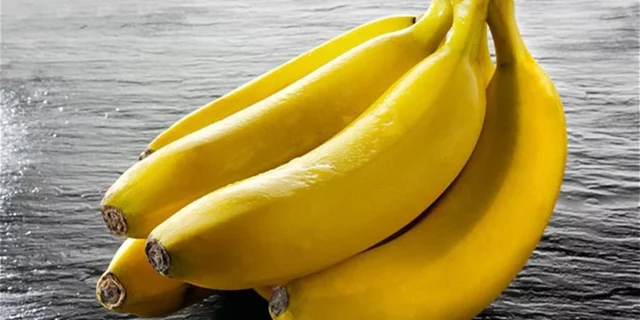
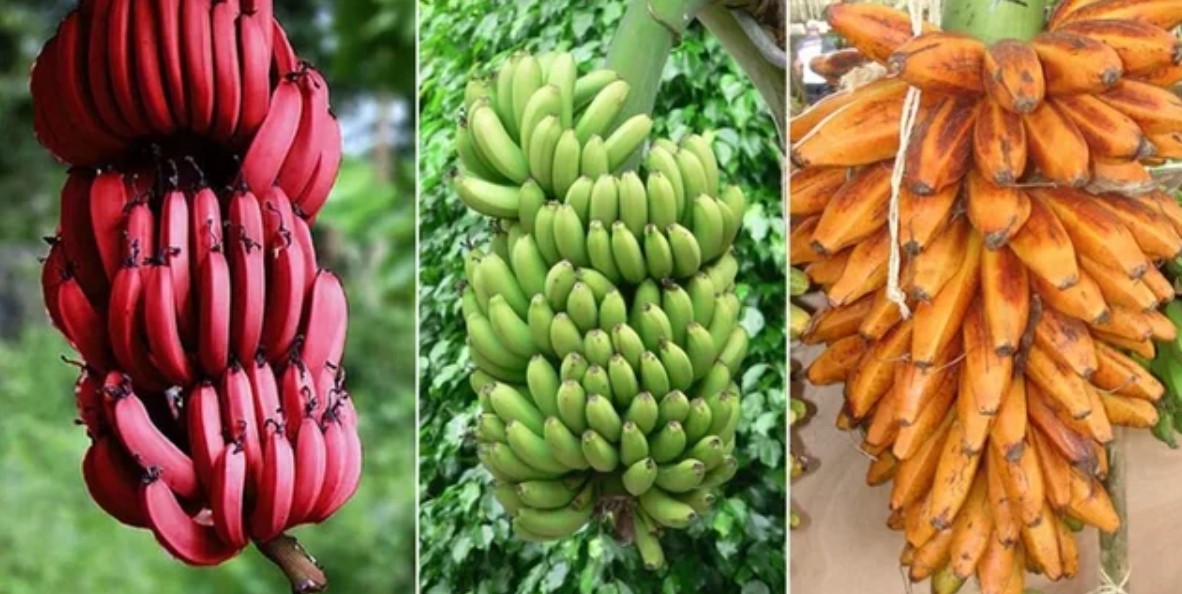

 ENTERTAINMENT9 months ago
ENTERTAINMENT9 months ago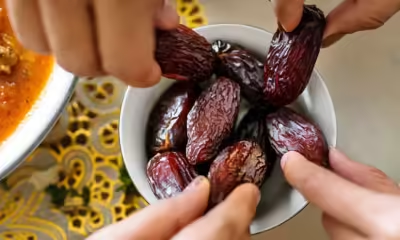
 IN-THE-NEWS10 months ago
IN-THE-NEWS10 months ago
 IN-THE-NEWS5 months ago
IN-THE-NEWS5 months ago
 SPORTS8 months ago
SPORTS8 months ago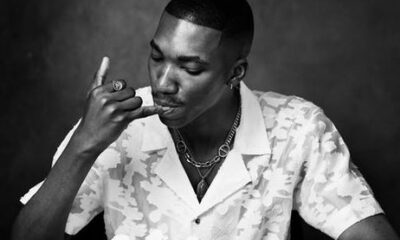
 IN-THE-NEWS9 months ago
IN-THE-NEWS9 months ago
 SPORTS10 months ago
SPORTS10 months ago
 IN-THE-NEWS5 months ago
IN-THE-NEWS5 months ago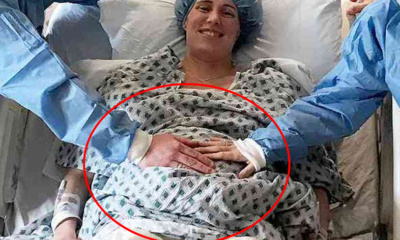
 METRO8 months ago
METRO8 months ago



